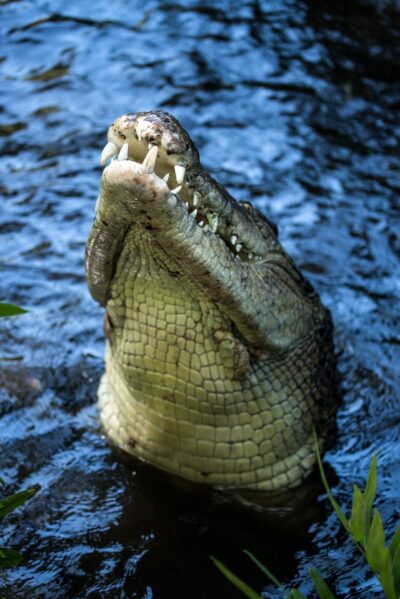Kumana Bird Sanctuary also known as Kumana National Park and Yala East National Park, is a wildlife reserve known for its pristine natural beauty and abundant wildlife. The park is characterized by its vast expanses of wetlands, lagoons, and mangrove swamps, which provide a unique habitat for a wide variety of bird species.
In addition to its natural wonders, Kumana National Park offers visitors the opportunity to experience the rich cultural heritage of Sri Lanka. The park’s vicinity is dotted with ancient archaeological sites and remnants of ancient civilizations, providing a glimpse into the country’s history and cultural heritage.
Kumana Bird Sanctuary is located in the Ampara District of Sri Lanka, on the southeastern coast of the country, near the town of Panama. The Sanctuary covers an area of approximately 35,664 hectares and is bordered by the Indian Ocean to the east.
Kumana National Park , A Ramsar Wetland
This national park was designated as the fifth ramsar wetland by the ramsar convention on the internationally important wetland on October 29, 2010, taking into account the value of the park’s wetlands and the animals that live there. The Kumanna Villuwa is a distinctive wetland ecosystem found in the Kumana National Park.
History and significance of the Kumana National park
The history of Kumana National Park dates back to 1938. The park when it was declared a wildlife sanctuary by the British colonial government. Initially, the park covered a smaller area, but it was expanded in subsequent years to protect the unique habitats and wildlife found in the region. In 1940, the park was designated as a bird sanctuary due to its significance as a nesting and breeding ground for various bird species.
Kumana National Park holds great cultural and historical significance as well. The park is situated in close proximity to the ancient Hindu temple of Kudumbigala, which dates back to the 3rd century BCE. The temple complex consists of several rock caves and stupas, offering a glimpse into Sri Lanka’s rich cultural heritage.
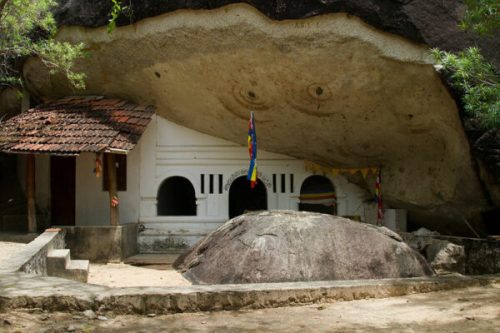
Kudumbigala Temple
Biodiversity and Wildlife
Kumana Bird Sanctuary is renowned for its richness and diversity of wildlife. The Sanctuary’s varied ecosystems, including forests, grasslands, wetlands, and coastal habitats, provide a conducive environment for a wide range of animal species.
Bird Species in Kumana
One of the notable attractions of Kumana Bird Sanctuary is its avian population. With over 200 bird species documented within its boundaries, the park is a paradise for birdwatchers and ornithologists. It serves as an important nesting and breeding ground for various resident and migratory bird species. Visitors can spot magnificent water birds such as painted storks, pelicans, spoonbills, herons, and ibises. The park is also known for its raptors, including eagles, falcons, and owls. The chirping, squawking, and melodic calls of the birds create a mesmerizing ambiance throughout the park.
Mammal Species in Kumana
In addition to its avifauna, Kumana National Park is home to a diverse range of mammals. The park supports a population of Sri Lankan elephants, which can be observed roaming freely in their natural habitat. Leopards, Sri Lankan sloth bears, sambar deer, spotted deer, wild boars, and water buffalo are among the other notable mammalian species found in the park. The park’s vegetation provides ample cover and food sources for these animals, allowing them to thrive in their natural surroundings.
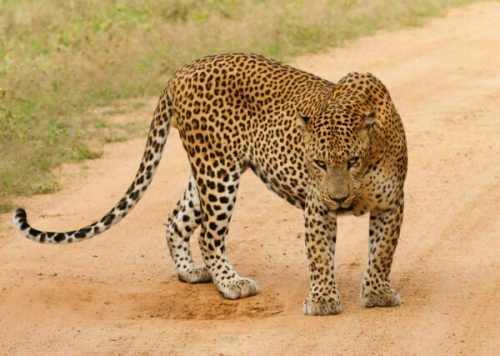
Popular Bird Species in Kumana Bird Sanctuary
1. Black-necked Stork (Ephippiorhynchus asiaticus)
- A large wading bird with distinctive black and white plumage. It is known for its down-curved bill and elegant movements.
2. Lesser Adjutant (Leptoptilos javanicus)
- A tall bird with pale grayish-brown plumage and a naked neck and head. It is one of the largest wading birds found in Kumana.
3. Sri Lanka Junglefowl (Gallus lafayettii)
- The national bird of Sri Lanka, with vibrant red, orange, and golden plumage. It is endemic to the island and known for its loud calls.
4. Painted Stork (Mycteria leucocephala)
- A large bird with a white plumage and pink accents. It has a unique yellow beak and can be found near wetlands.
5. Oriental Darter (Anhinga melanogaster)
- A bird with a long, snake-like neck and black and white plumage. It is often seen perched or swimming in water bodies, hunting for fish.
6. Indian Cormorant (Phalacrocorax fuscicollis)
- A sleek, dark-colored bird with a hooked beak. It dives underwater to catch fish and is commonly found near water bodies.
7. Yellow-wattled Lapwing (Vanellus malabaricus)
- A bird with black and white plumage and distinct yellow facial wattles. It prefers open grasslands and wetlands.
8. Grey-headed Fish Eagle (Ichthyophaga ichthyaetus):
- A bird of prey with a gray head and a powerful hooked beak. It can be seen near water bodies, hunting for fish.
9. Indian Peafowl (Pavo cristatus):
- Known for its magnificent display of vibrant plumage and elaborate tail feathers. It is commonly found in forested areas and open grasslands.
10. Spot-billed Pelican (Pelecanus philippensis)
- A large water bird with a distinctive spot on its bill. It can be found in wetlands and shallow lakes, diving for fish.
To witness the maximum bird activity, it is advisable to visit Kumana National Park during the months of April to July. This period aligns with the breeding season of many bird species. Additionally, the arrival of numerous migratory birds from the northern hemisphere adds to the overall avian spectacle during this time.
Lenama koti, Man Eaters in Kumana
It is extremely unusual for a leopard to attack a human. If they are in the same territory at the same time, they usually avoid human confrontation. But According to a legend, Lenama leopards, crossbreeds of Sri Lankan leopards and Indian tigers are renowned as man eaters in Sri Lanka.
According to The legend, the Lenama or Kumana Leopards were much larger, with wider and larger heads. The rumoured presence of a stripe or two along the neck of these legendary leopards is a very interesting trait. In contrast, the fur was a dark tawny orange colour without any visible spots.
Camping in Kumana National Park
Camping in Kumana National Park is an incredible way to immerse yourself in the natural beauty and wilderness of the park. This allows you to experience the sights, sounds, and serenity of Kumana on a more intimate level.
Kumana has designated campsites where visitors can set up their tents and spend the night. These campsites are strategically located within the park, providing a safe and immersive experience amidst nature. It’s important to obtain the necessary permits and adhere to park regulations before camping in Kumana.
When camping in Kumana, it’s essential to prioritize safety. Follow the guidance of park authorities and adhere to safety protocols. Make sure to bring necessary camping gear, including a sturdy tent, sleeping bags, camping stove, insect repellent, and a first aid kit. Remember to store food securely to prevent wildlife encounters.
If you’re new to camping or prefer a guided experience, consider joining a guided camping expedition in Kumana like Camp Leopard. These expeditions are led by experienced guides who provide expert knowledge about the park’s wildlife, ecosystems, and camping techniques. It’s a great way to learn and make the most of your camping adventure. If you are interested about Camping inside the Kumana National Park You can Contact us for more Details.
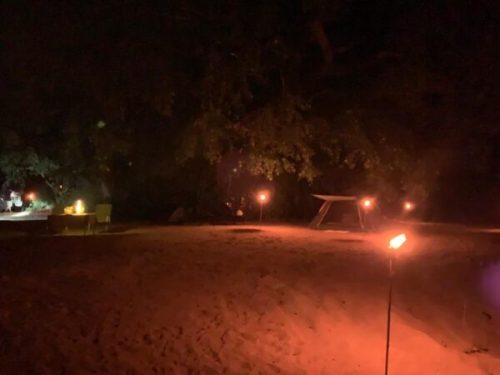
Historical Sites in Kumana National Park
- Bambaragas Thalawa
- Bowaththe Galge
- Kiripokuna
- Kudumbigala
Reaching to Kumana National Park
- From Colombo: Passing Ratnapura, Pelmadulla, Udawalawe, Thanamalwila, Buttala, Monaragama, Siyambalanduwa, Pottuvil and Panama.
- From Kandy: Passing Mahiyanganaya, Bibile, Monaragala, Siyambalanduwa, Pottuvil and Panama
- From Polonnaruwa: Passing Baticaloa, Kalmunei, Akkareipattu, Thikukkovil, Pottuvil and Panama
Weather in Kumana National Park
- Dry Season (May to September): During the dry season, Kumana experiences relatively less rainfall. The weather is generally hot and dry, with temperatures ranging from 28°C to 32°C (82°F to 90°F). The skies are mostly clear, offering plenty of sunshine and ideal conditions for outdoor activities.
- Wet Season (October to April): The wet season in Kumana brings more rainfall to the region. The weather is characterized by intermittent showers and occasional thunderstorms. The temperatures during this season range from 26°C to 30°C (79°F to 86°F). The park transforms into lush greenery, and the waterways fill up, creating a vibrant and thriving ecosystem.
Camp Sites in Kumana National Park
- Nelumpath Pokuna
- Heraligas Ara
- Gal Amuna Camp Sites
for Bookings visit www.dmc.gov.lk
Nearby Attractions and Points of Interest of Kumana Bird Sanctuary
Yala National Park
Located in close proximity to Kumana, Yala National Park is renowned for its diverse wildlife and scenic landscapes. It is home to the highest density of leopards in the world, along with elephants, sloth bears, and numerous bird species. Embark on a safari in Yala for an unforgettable wildlife experience.
Arugam Bay
Known for its stunning beaches and excellent surfing conditions, Arugam Bay is a popular destination for beach lovers and water sports enthusiasts. Relax on the sandy shores, catch some waves, or explore the nearby lagoons and mangroves.
Pottuvil Lagoon
Situated near Arugam Bay, Pottuvil Lagoon is a tranquil water body surrounded by lush greenery. Take a boat ride through the lagoon to observe its diverse birdlife, enjoy the peaceful atmosphere, and witness stunning sunsets.
Kudumbigala Monastery
For history and culture enthusiasts, a visit to Kudumbigala Monastery is a must. This ancient Buddhist monastery is situated amidst a scenic forest and offers a serene environment for meditation and exploration of ancient ruins.
Panama Village
Located near Kumana, Panama Village is a traditional Sri Lankan village known for its unique irrigation system called “villu.” Explore the village to learn about traditional farming practices, visit ancient temples, and experience the authentic rural lifestyle.
Okanda Kovil
Pay a visit to Okanda Kovil, a Hindu temple situated on the eastern coast of Sri Lanka. This historic temple holds significance for both Hindus and Buddhists and offers a picturesque setting surrounded by lush greenery and the sea.
Lahugala National Park
Lahugala National Park is a smaller park compared to Kumana and Yala, but it is home to a variety of wildlife, including elephants, deer, and numerous bird species. Take a safari in Lahugala to witness its natural beauty and unique ecosystem.
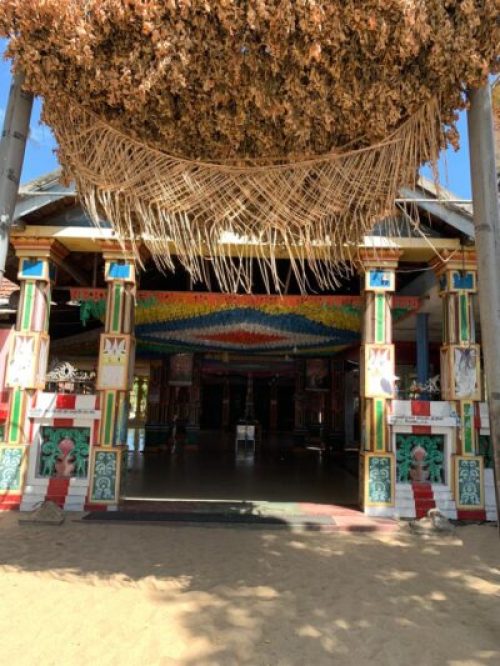
These nearby attractions provide additional opportunities to explore the natural and cultural wonders of the region surrounding Kumana National Park. Whether you’re seeking wildlife encounters, beach relaxation, or cultural immersion, the vicinity of Kumana offers a diverse range of experiences to complement your visit to the park.
Frequently Asked Questions (FAQs)
Q: How can I reach Kumana National Park? A: Kumana National Park can be reached by road from Colombo or by taking a domestic flight to the nearby Mattala Rajapaksa International Airport.
Q: What is the best time to visit Kumana National Park? A: The best time to visit Kumana National Park is during the dry season from April to July when wildlife sightings are most frequent.
Q: Are there accommodation options available near the park? A: Yes, there are several accommodation options available near Kumana National Park, ranging from luxurious resorts to budget-friendly guesthouses.
Q: Can I take a guided tour of the park? A: Yes, guided tours are available at Kumana National Park, led by experienced naturalists who will enhance your wildlife viewing experience. If you are interested about Camping or Treking inside the Kumana National Park You can Contact us for more Details.
Q: Are there any restrictions or regulations for visitors? A: Yes, visitors are required to follow the park’s regulations, such as not littering, maintaining a safe distance from animals, and respecting the park’s ecosystem.
Q: Can I bring my own vehicle for safari? A: Yes, private vehicles are allowed inside the park for safaris, but it is recommended to hire a professional guide for a better experience.

Image courtesy of Amila Tennakoon via creative commons licenses. some rights reserved.
We hope you enjoyed this blog on Kumana Bird Sanctuary!. If you have any questions, please send us a message on our website or leave a comment below so that we can respond!

